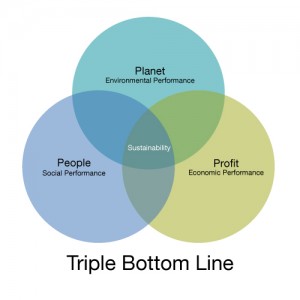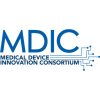In the past few years, sustainability has grown from being a fringe movement to a widely-accepted, smart business practice. Sustainability goes beyond merely being “green” or environmentally friendly. The mostly widely accepted definition for sustainable development is “meeting the needs of the present without compromising the ability of future generations to meet their own needs” (United Nations Brundtland Report). Our effect on individuals and society is interconnected with our effect on the environment. Because of this, more and more businesses are managing for the triple bottom line—people, planet, profit.
Facing significant and unique barriers to adoption, the medical device industry has quite understandably been slow to embrace sustainable practices. Medical design has rightfully put safety, efficacy, and usability first. While these factors will always be at the forefront of medical device development, there are more and more pressures for finding solutions that are also more sustainable, including:
- Regulatory Pressures: European Union (EU) regulations on waste reduction and use of hazardous materials have already had a big impact on product development in consumer electronics and industrial categories. While medical devices have been exempt from many of these regulations, it’s only a matter of time before regulations like these are more widely adopted and applied to medical markets.
- Market Pressure: As they begin to apply triple-bottom-line thinking to their businesses, more and more hospitals are beginning to use “sustainability scorecards.” These scorecards factor into purchasing decisions. A low sustainability score can mean the difference between winning and losing a multi-million dollar sale.
- Social Pressures: As sustainable thinking becomes more ubiquitous, social pressures from media, consumers, and practitioners increase the call to reduce waste in general and medical waste in particular.
- Corporate Pressures: Realizing that Corporate Responsibility and Sustainable practices are good business, medical device companies are adopting them. These practices will no doubt play into how these companies develop medical devices.
Some may look at all these pressures and see an endless array of constraints, doomed to raise costs and bog down the process. But when you understand that truly sustainable practices can result in lowered costs and streamlined operations, you realize that leading the charge for sustainability in medical devices presents a great business opportunity. Embracing the push toward more sustainable practices now will give you and your company a competitive advantage by providing product differentiation and increasing profits.
The ‘Big Picture’ view
One of the most valuable insights from the sustainability arena is zooming out to a broader view as we think more systemically. The medical devices we develop cannot be considered in isolation. As we zoom out one level, Life Cycle Analysis helps us extend the view of our products from sourcing raw materials, through development, use, and finally through end-of-life disposal and recycling. But the real big picture view extends beyond typical life cycle assessments. Products exist in a larger ecosystem where cultural factors come into play.
In fact, societal fears about the spread of diseases such as HIV were a key driver of the increased use of the disposables business model in the medical industry. From the old practices of reusing products often made of glass and metal that were sterilized between uses today, that paradigm has shifted to using disposables. From simple syringes to high-tech surgical tools, countless medical businesses have been built around the one-time-use model. Patients are comforted by the thought that these throw-away products protect them from blood-borne pathogens. And while they do offer protection, society is increasingly realizing that a throw-away model is ultimately not optimal. Things that are thrown away cost us money to produce, they cost us in terms of hard dollars for disposal and recycling, and they cost us in environmental damage associated with landfills and incineration. The pendulum has begun to swing away from the peak where high use of disposables made the most sense. Thinking systemically helps us understand this, and helps us develop medical devices more efficiently, effectively, and appropriately.
Obviously, the disposable business model isn’t going away any time soon. But even working with disposables, we can make a real difference by re-examining the medical devices we create through a lens of sustainability. Where can we reduce the number of disposable elements or the amount materials involved in these products? Can we limit the number of different materials to facilitate recycling? How can we reduce waste in the manufacturing process? How can we innovate to create a more sustainable solution? Incremental changes can quickly add up to make a real difference, resulting in more sustainable products, competitive differentiation, and increased profits.
Key areas for innovation and optimization
In futures posts, we’ll explore approaches for meeting the challenges presented by the disposables business model. We’ll also look at two additional areas ripe for innovation and optimization: materials and packaging. For materials, we’ll discuss bio-sourced plastics and innovative new materials with properties that allow for longer use, sterilization, and material reduction through smaller wall thicknesses.
In the packaging world, we’ll look at the special challenges faced in the medical industry where sterility can be a top consideration. We’ll consider packaging from both the “close-up” perspective of optimizing the packaging itself, and a more “wide angle” view of how packaging plays into operations—for example the most minimal packaging solution could require a redesign of stock rooms.
Creating sustainable medical devices is challenging, but there is great opportunity to step back, get a big picture view, and examine our approach. When you understand that sustainable solutions are often found through minimizing waste and optimizing efficiency, you understand that sustainable design presents a great business opportunity. True sustainability isn’t about compromise, it’s about creating innovative solutions that are not only good for the world, they’re good business.







